In first year, Trump reshaping government to reflect his vision
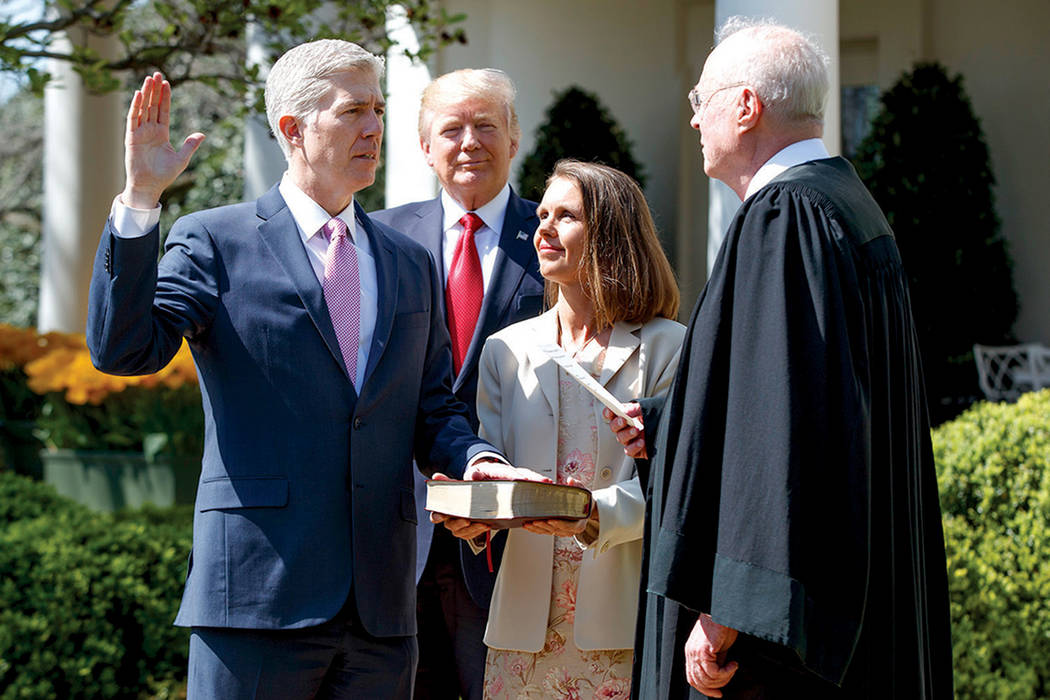
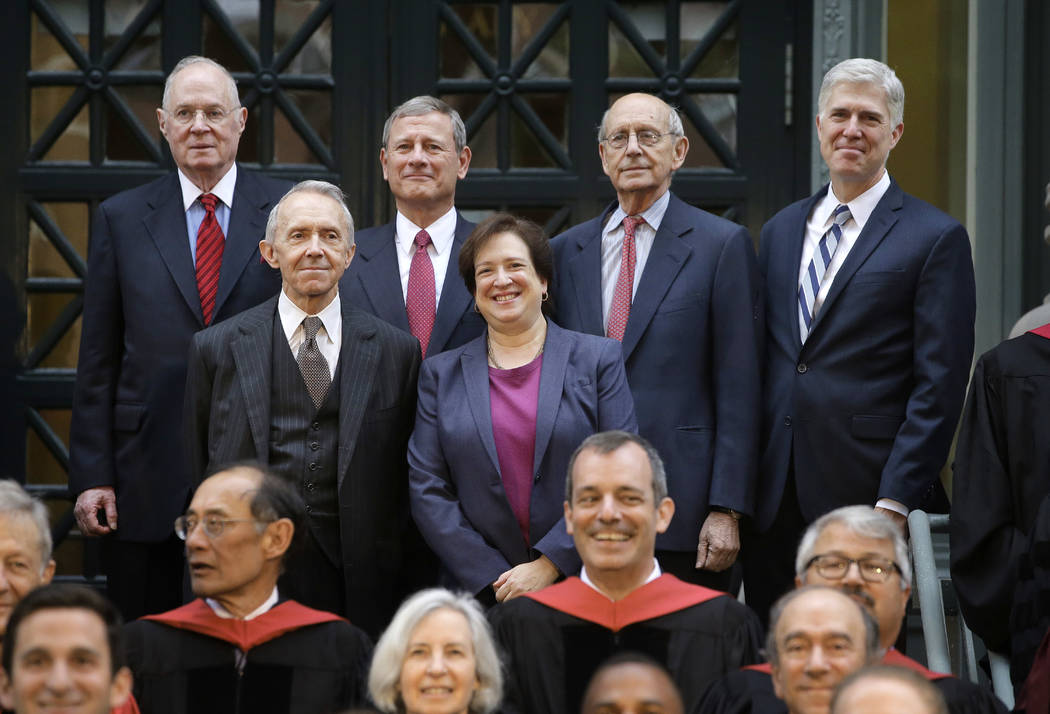
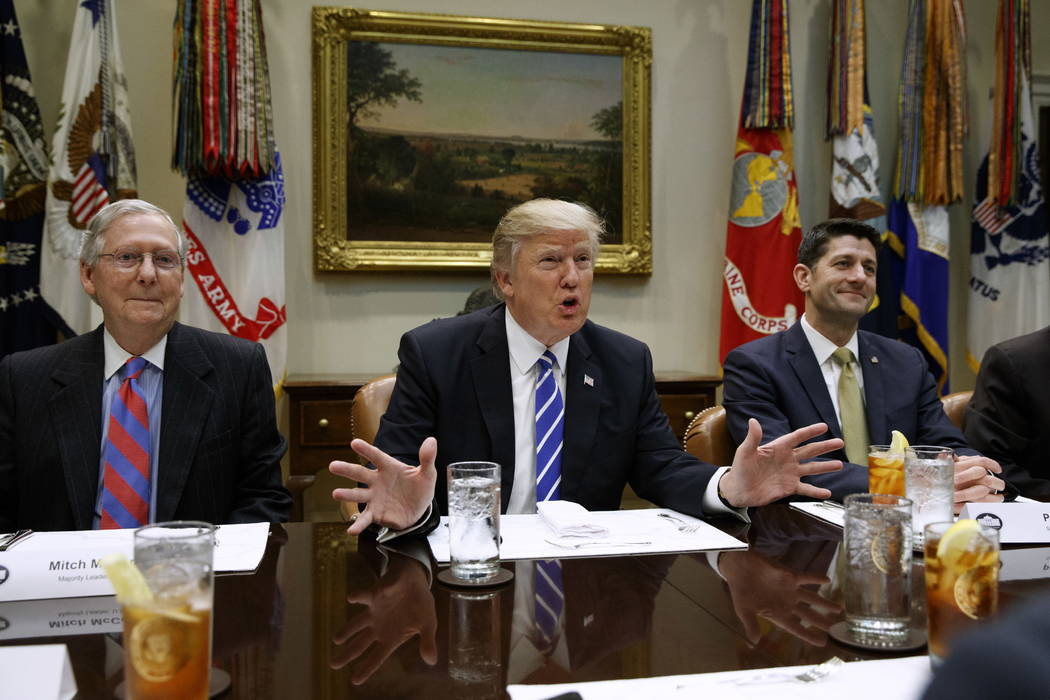
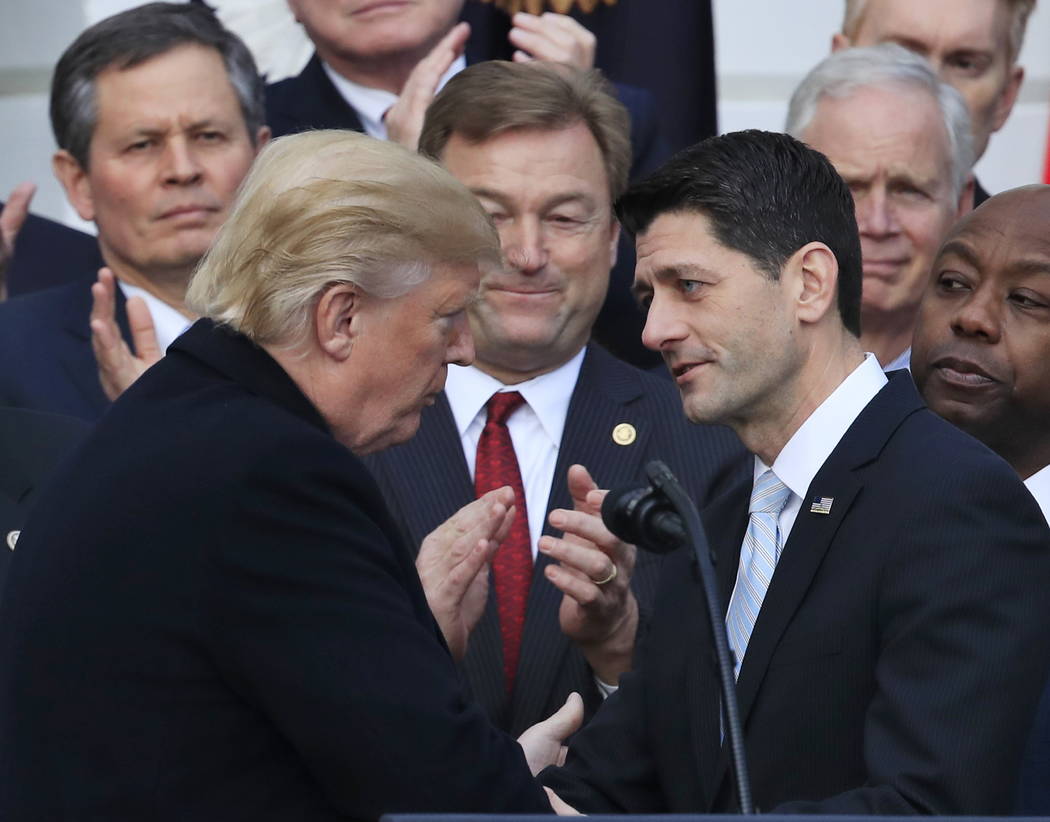
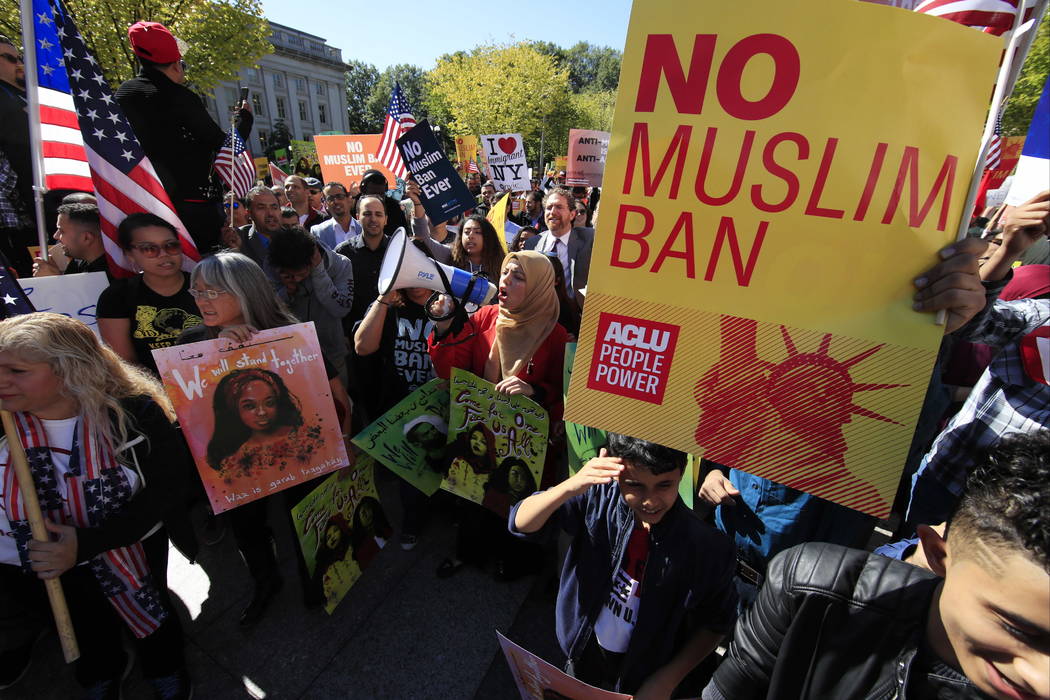
This is the second in a three-part series examining President Donald Trump’s first year in office.
WASHINGTON — What exactly did candidate Donald Trump mean when he pledged to “Make America Great Again?”
The answer can be found in the way the new president has reshaped government to reflect his vision while erasing many policies issued by his predecessor, President Barack Obama.
Defense spending is up to nearly $700 billion annually for the new fiscal year from $583 billion in the last fiscal year. The big boost reflects this administration’s view that military missions are about winning, not containing.
The Trump administration also has taken steps to return law enforcement and immigration administration to roots entrenched decades ago, when law and order were king and social justice was an afterthought.
Trump’s other mission has been to downsize government programs and regulations that he believes hold back American businesses. Often these programs carry the Obama imprimatur. While Trump failed to dismantle Obama’s Affordable Care Act, he did sign legislation that ends its pivotal individual mandate.
He withdrew the United States from the Trans-Pacific Partnership, began a pullout from the Paris climate accord and used the 1996 Congressional Review Act, which essentially allows Congress to repeal executive actions taken in a president’s last days, 15 times to roll back Obama-era rules.
Trump also has used the power of his pen to bury some Obama initiatives, like the Clean Power Plan, which restricted carbon output from the nation’s power plants. In a push to boost energy production, Trump also quickly reversed an Obama decision and approved the Keystone pipeline. Then, this month he signed a tax cut bill that opened the Arctic National Wildlife Refuge for oil drilling.
Trump also proposed downsizing four national monuments, including Nevada’s Gold Butte, which Obama established during his last month in office. Nevada Republicans supported the move.
Supreme Court choice
For Trump, it’s all about the base.
On his 11th full day in office, Trump nominated Neil Gorsuch, 49, to fill the U.S. Supreme Court vacancy created when Justice Antonin Scalia died suddenly in February 2016. Trump showed himself true to a campaign promise to nominate one of 20-plus potential nominees whose names he released to burnish his conservative credentials.
The Gorsuch pick also demonstrated that Trump could choose a nominee recognized not as a rigid ideologue but as a superior jurist. Trump deliberately picked a nominee it would be hard for Democrats to marginalize.
The GOP Senate has used rules revamped by Democrats under former Senate Majority Leader Harry Reid to fast-track votes on other Trump judicial nominees. Twelve judges have been approved to serve in federal appeals courts, a record since those courts were created in 1891.
“The speed at which these judges are being rammed through the process is stunning,” Sen. Dianne Feinstein of California, the ranking Democrat on the Senate Judiciary Committee, said after the Senate confirmed two circuit court judges whom she opposed. While the U.S. Supreme Court will hear 100 to 150 cases in a given year, federal appeals courts will adjudicate some 55,000 cases.
“Federal appellate judge have the last word in the over 99 percent of cases that don’t go to the Supreme Court. And when another Supreme Court vacancy arises, these judges will be the ones best-positioned to fill the seat,” the conservative Judicial Crisis Network’s chief counsel, Carrie Severino, said of the Trump picks.
Not all nominees have shined under the harsh Senate hearing spotlight. This month, Matthew Petersen withdrew from consideration after he stumbled during harsh questioning by Sen. John Kennedy, R-La., which turned the hapless would-be judge into a YouTube sensation.
At the end of Trump’s first full week in office, the president signed an executive order that suspended refugee entry and ordered a 90-day entry ban for individuals from seven predominantly Muslim nations: Iran, Iraq, Libya, Syria, Somalia, Sudan and Yemen. Protests erupted across the country as officials barred entry to passengers who had boarded planes before Trump signed the order. The Ninth Circuit Court of Appeals blocked its implementation.
In March, Trump signed a do-over order barring entry into the U.S. from six predominantly Muslim countries. Iraq was removed from the list.
The order also spared individuals with current visas or green cards. Despite lower court reversals, the Supreme Court allowed that measure to take partial effect in June, with a generous exception for “foreign nationals who have a credible claim of a bona fide relationship with a person or entity in the United States.”
In December, the Supreme Court allowed the Trump administration to enforce the ban, now directed toward citizens of Chad, Iran, Libya, Somalia, Syria and Yemen, as it urged appeals courts to speed up their reviews. Expect the high court ultimately to rule on the constitutionality of the policy.
Tough on immigration
In the meantime, the Trump travel bans served another purpose. They erased any doubt that this administration would be tough on undocumented immigrants.
While he has not won the needed funding from Congress, Trump still talks about his beloved “big, beautiful” border wall. Even without the funding, Trump’s message has had a dampening effect on illegal immigration. By July, the number of illegal border crossings was down 47 percent, and the number of voluntary departures of undocumented immigrants was up 31 percent.
Even still, the tough-talking Trump wavered after he signed a directive to end the Obama administration’s Deferred Action for Childhood Arrivals order in September.
As a candidate in 2016, Trump pledged to immediately terminate the DACA program, which shielded some undocumented immigrants brought into the country illegally as minors.
In office, Trump clearly had second thoughts. In his only solo White House press conference in February, Trump blinked.
“DACA is a very, very difficult subject for me, I will tell you,” Trump said, adding that “you have some absolutely incredible kids.”
It took a reluctant Trump until September to have Attorney General Jeff Sessions announce an “orderly withdrawal” of the program.
“I do not favor punishing children, most of whom are now adults, for the actions of their parents. But we must also recognize that we are a nation of opportunity because we are a nation of laws,” Trump wrote.
Sessions also effectively rescinded instructions issued in 2013 by Obama’s attorney general that directed federal prosecutors not to pursue mandatory minimum sentences for low-level, nonviolent drug offenders. Thus Sessions thwarted intermittent attempts by a rump of Democratic and Republican lawmakers to curb excesses in the war on drugs.
“Illegal drug use is not a victimless crime,” Trump said during an October event at which he declared the opioid crisis a national health emergency. “There is nothing admirable, positive or socially desirable about it.”
The event also highlighted Trump’s softer side as the teetotaling New Yorker discussed his deceased brother Fred’s losing battle with the bottle.
“Each of us is responsible to look out for our loved ones, our communities, our children, our neighbors and our own health,” Trump said.
Paring regulations
Trump’s other passion has been paring regulations. In his first month in office, Trump signed an executive order directing agencies to eliminate two regulations for every new regulation put on the books. His administration claims to have eliminated 22 regulations for every new one. Apparently many of the terminated regulations were dormant, but now they cannot come back.
“Things are off to a good start, but we shouldn’t confuse a good start with good results,” said Adam White, research fellow for Stanford’s Hoover Institution.
White is especially impressed with Trump’s choice to run the Office of Administrative and Regulatory Affairs, Neomi Rao, a co-founder of George Mason University’s Center for the Study of the Administrative State.
On his first day in office, Trump signed an order directing federal offices “to minimize the unwarranted economic regulatory burdens” of the Affordable Care Act pending attempts to repeal the law. Trump never hit the repeal mark. After the president stuck out his neck, the Senate’s failure to pass a measure to repeal and replace or simply repeal Obamacare threatened to doom Trump to early lame duck status.
Aware of the danger, the White House and GOP congressional leaders rallied to pass a large tax cut bill that would satisfy the base, put money in working families’ pockets and lower taxes for high-income earners. Supporters believe that a considerable drop in the corporate tax rate, from 35 percent to 21 percent, will prod U.S. businesses to put more money into their operations.
According to the Tax Policy Center, the measure is expected to lower taxes for some 80 percent of filers next year, while 5 percent are expected to pay more. Workers should see the change in their paychecks under new withholding tables expected in February. The tax cuts also are expected to add $1.5 trillion to the national debt.
The measure also effectively crippled the Affordable Care Act, as it eliminated a mandate that everyone purchase insurance or face an IRS penalty.
The tax bill passed on Dec. 20 without a single Democratic vote. Until they have power, said Mark Harkins, senior fellow at Georgetown University’s Government Affairs Institute, “there’s no reason for them to work with President Trump.”
But don’t discount the win, Harkins added.
“This is a major, major accomplishment,” he said.
And yet Harkins suspects that a different GOP president could have accomplished more of his agenda.
On the afternoon the bill passed, Trump invited Republicans to the White House to celebrate the legislative win. With that one victory, Republicans had changed the dynamics in a way that should allow them to saunter into 2018 free of the shame that came with the do-nothing label.
Savoring the moment,
Trump invited other Republicans to share the spotlight with him, as he said, “We are making America great again.”
Contact Debra J. Saunders at dsaunders@reviewjournal.com or 202-662-7391. Follow @DebraJSaunders on Twitter.
Related
In his first year, Trump changes the rules for diplomacy and trade (Part 1 in series)
Trump’s wins in 2017
— Nominated Neil Gorsuch who was confirmed as U.S. Supreme Court Justice
— Signed Tax Cuts and Jobs Act
— Directed federal officials to eliminate two old regulations for every new one.
— Repealed President Barack Obama’s Clean Power Plan
— Authorized the Keystone Pipeline
— Called an end to Obama’s Deferred Action on Childhood Arrivals policy













